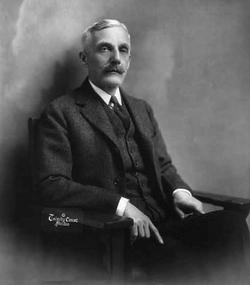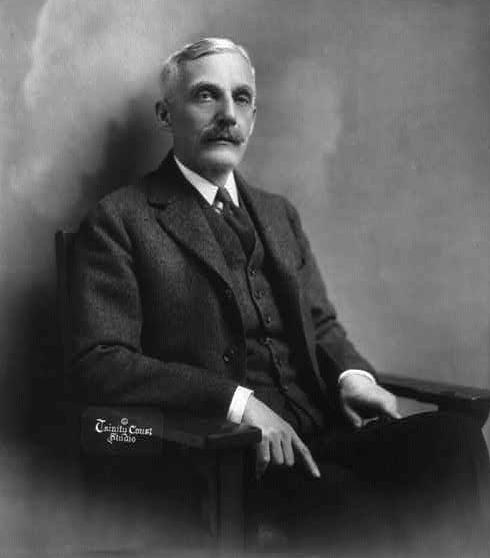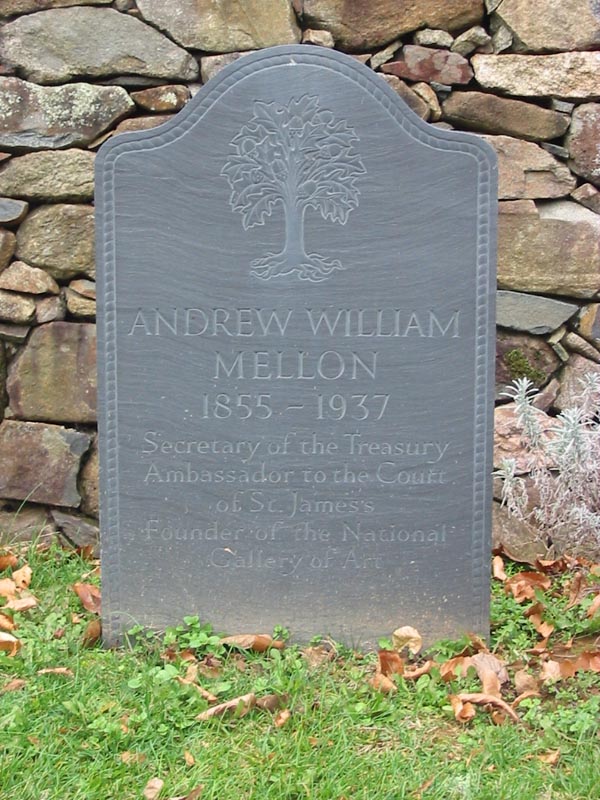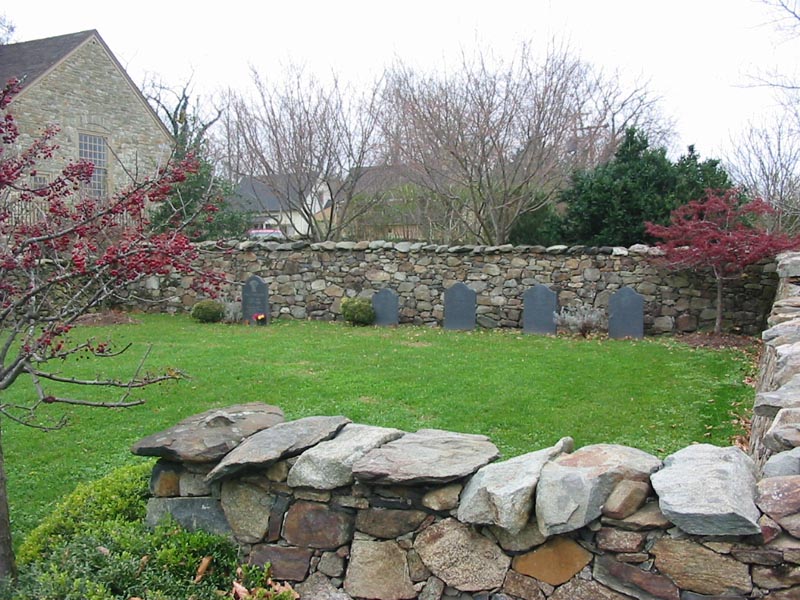US Treasurer. He gained recognition as the United States' 49th Secretary of the Treasury, serving as a Republican from 1921 to 1932. He served in the cabinet of three United States Presidents: Harding, Coolidge, and Hoover. He was in office during the Wall Street Crash of 1929 and the start of the Great Depression. He supported tax reforms with the "Mellon Plan" and with new laws such as the Revenue Act of 1921, the Revenue Act of 1924, and the Revenue Act of 1926. In 1937, he gave to the Nation his magnificent art collection plus $10 million to build the National Gallery of Art in Washington, D.C. but died before it was built. Upon leaving the Treasury Department and President Hoover's Cabinet in February of 1932, Mellon, who was facing impeachment that started by Congress on January 6, 1932, accepted the post of U.S. Ambassador to Great Britain. In 1900, Andrew Mellon married Nora McMullen, a young British woman with whom he had two children. After serving for one year, he retired to private life when the Democratic President Franklin Roosevelt was elected. Besides being in politics, A. W. Mellon, as he was called, was the banker of Mellon National Bank and Union Trust Company in Pittsburg, as well as a businessman, industrialist, philanthropist, and art collector. He was involved in the running of 99 banks during his career. Born the son of a banker, he started working for his father's bank as a teenager and attended, but did not graduate, Western University of Pennsylvania. He had experienced national economic declines. He owned an interest in chemicals, construction, oil, public utilities, airplanes, steel, mining, railroads, a whiskey distillery, and other industries. He had no political career before being asked to be the United States Treasurer. Critics claim that his appointment to Secretary of the Treasury was illegal as a statute from 1789 prohibits the treasury secretary from engaging in commerce or trade, and the founding fathers had also written a law blocking the treasury secretary from holding bank stocks. Mellon claimed that he had transferred his holdings to his brother. As one of the wealthiest United States Cabinet members, he died of uremia, broncho-pneumonia, and other complications of aging.
US Treasurer. He gained recognition as the United States' 49th Secretary of the Treasury, serving as a Republican from 1921 to 1932. He served in the cabinet of three United States Presidents: Harding, Coolidge, and Hoover. He was in office during the Wall Street Crash of 1929 and the start of the Great Depression. He supported tax reforms with the "Mellon Plan" and with new laws such as the Revenue Act of 1921, the Revenue Act of 1924, and the Revenue Act of 1926. In 1937, he gave to the Nation his magnificent art collection plus $10 million to build the National Gallery of Art in Washington, D.C. but died before it was built. Upon leaving the Treasury Department and President Hoover's Cabinet in February of 1932, Mellon, who was facing impeachment that started by Congress on January 6, 1932, accepted the post of U.S. Ambassador to Great Britain. In 1900, Andrew Mellon married Nora McMullen, a young British woman with whom he had two children. After serving for one year, he retired to private life when the Democratic President Franklin Roosevelt was elected. Besides being in politics, A. W. Mellon, as he was called, was the banker of Mellon National Bank and Union Trust Company in Pittsburg, as well as a businessman, industrialist, philanthropist, and art collector. He was involved in the running of 99 banks during his career. Born the son of a banker, he started working for his father's bank as a teenager and attended, but did not graduate, Western University of Pennsylvania. He had experienced national economic declines. He owned an interest in chemicals, construction, oil, public utilities, airplanes, steel, mining, railroads, a whiskey distillery, and other industries. He had no political career before being asked to be the United States Treasurer. Critics claim that his appointment to Secretary of the Treasury was illegal as a statute from 1789 prohibits the treasury secretary from engaging in commerce or trade, and the founding fathers had also written a law blocking the treasury secretary from holding bank stocks. Mellon claimed that he had transferred his holdings to his brother. As one of the wealthiest United States Cabinet members, he died of uremia, broncho-pneumonia, and other complications of aging.
Bio by: Linda Davis
Inscription
SECRETARY OF THE TREASURY
AMBASSADOR TO THE COURT OF ST. JAMES
FOUNDER OF THE NATIONAL GALLERY
Gravesite Details
From Allegheny Cemetery Records
Family Members
Advertisement
See more Mellon memorials in:
Explore more
Sponsored by Ancestry
Advertisement

















